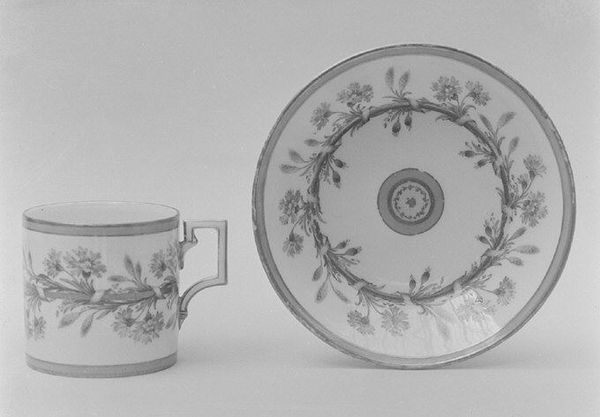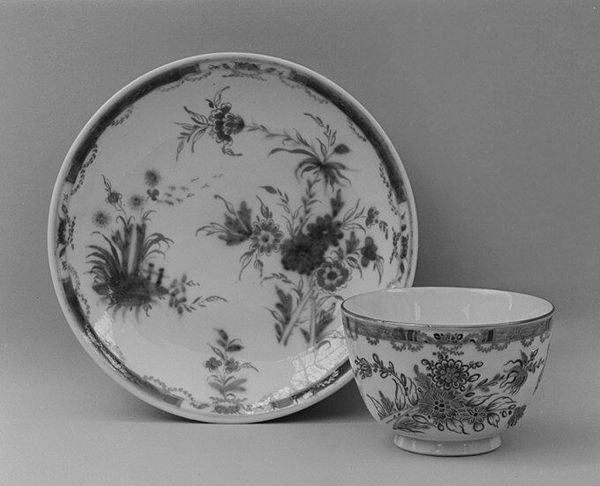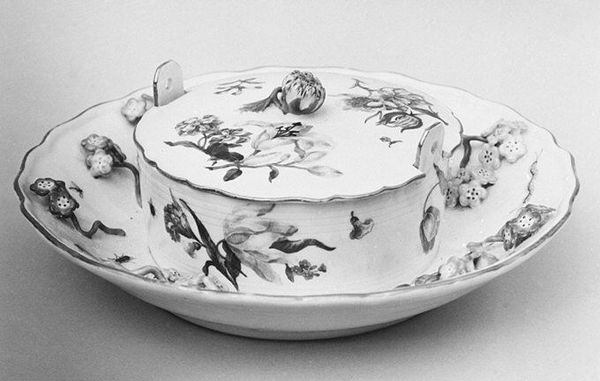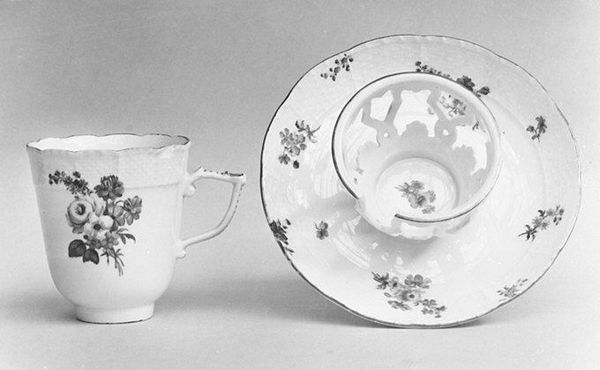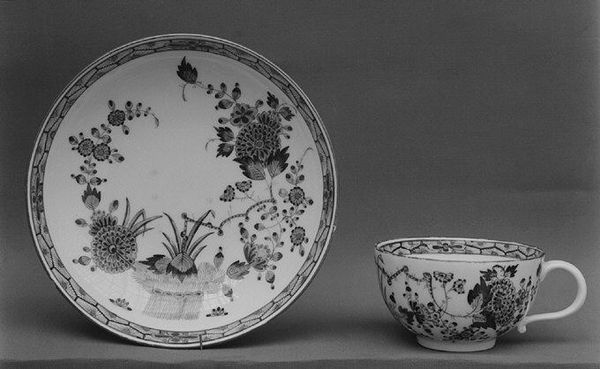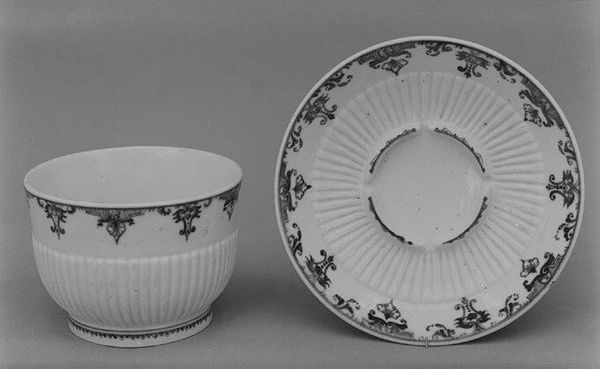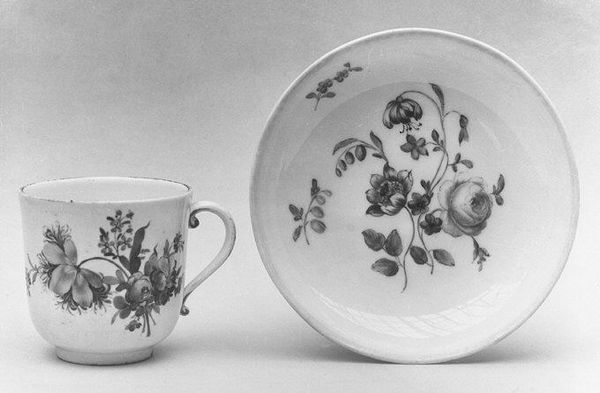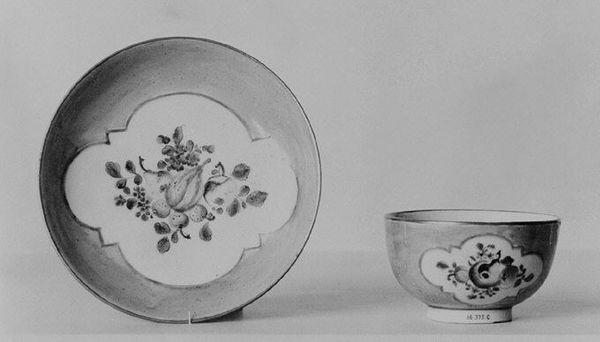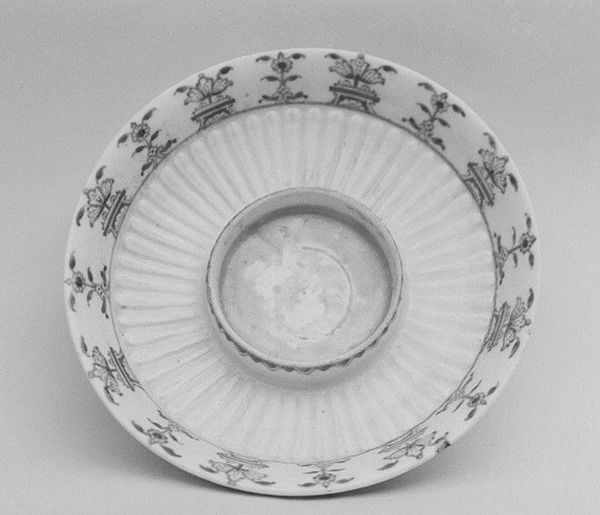
ceramic, porcelain, sculpture
#
neoclassicism
#
ceramic
#
porcelain
#
sculpture
#
decorative-art
Dimensions: Height (cup .13a): 2 7/8 in. (7.3 cm); Diameter (saucer .13b): 5 5/8 in. (14.3 cm)
Copyright: Public Domain
Curator: Before us, we have a "Cup and Saucer," dating from 1803 to 1810, made by the Royal Porcelain Manufactory. The floral pattern speaks to the Neoclassical interest in controlled, yet delicate aesthetics. Editor: Immediately, I am struck by the interplay between function and ornamentation. The flowers aren’t simply decorative; they define the form, containing the space within the cup and radiating outward across the saucer. It’s a formal gesture, almost architectural in its rigor. Curator: It’s essential to understand the sociopolitical context in which this object was made. Porcelain at the time signified luxury and status, controlled primarily by European monarchies. Drinking from such a piece would reinforce hierarchical social structures. The delicate floral pattern subtly imposes ideologies of class and gender onto everyday routines. Editor: Yet, considered on its own terms, the floral pattern also serves to underscore the volume and circular shape inherent in both objects. The porcelain, impeccably smooth, amplifies this, creating a pure aesthetic experience – an experience that transcends its social purpose, if we look closely at the artist's vision. Curator: Transcendence is an interesting term here. One could argue the artist, as an agent of the manufacturing company, wouldn’t have the creative liberty to rise above the prescribed aesthetic; rather they perpetuate the societal norms within this delicate cup and saucer. Were we to analyze the symbolic languages associated with specific flower types, these might act as an allusion to courtship, to marriage, to women's social confinement... Editor: Undoubtedly, this type of object has become embedded in intricate social networks and protocols of its time, however it is worth noting how efficiently the artist uses composition, material, and texture to create a refined artwork with simple elegance. The smooth transition from object to artwork can elicit emotional responses. The object transcends the boundaries of time, it is immortal. Curator: Viewing it from the historical and social perspectives, one can delve into societal hierarchies that would make such items, and subsequently, access to their symbolism available only to a few. Editor: Well, by analyzing both aspects, we have managed to enrich our experience and comprehension of "Cup and Saucer".
Comments
No comments
Be the first to comment and join the conversation on the ultimate creative platform.




